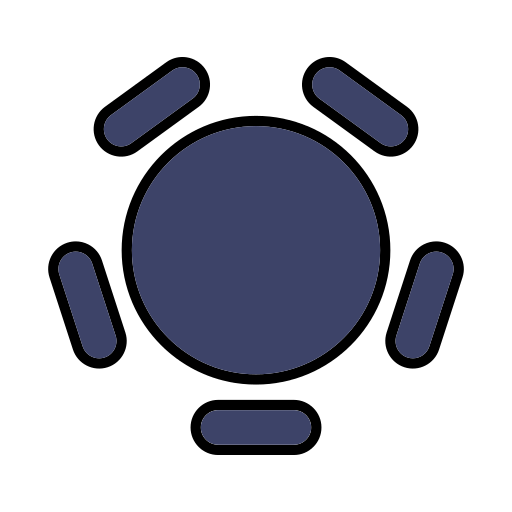Table of Contents
- Core Characteristics of SaaS Companies
- The SaaS Business Model
- Examples of Successful SaaS Companies
- Common Challenges for SaaS Companies
- Future Trends in SaaS
- Wrap-up
- FAQ
Core Characteristics of SaaS Companies
Software as a Service (SaaS) companies have become a cornerstone of the modern business landscape. But what exactly defines a SaaS company? Let’s dive into the core characteristics that set these businesses apart.
Cloud-based delivery is the foundation of SaaS. Unlike traditional software that requires installation on individual computers, SaaS products are accessed via the internet. This allows for easy updates, scalability, and accessibility from anywhere with an internet connection.
Key features of SaaS companies include:
- Subscription-based pricing models
- Regular updates and improvements
- Multi-tenant architecture
- Focus on customer success and retention
SaaS companies often prioritize user experience and interface design, as ease of use is crucial for customer adoption and retention. They also tend to have robust customer support systems in place to assist users and gather feedback for continuous improvement.
The SaaS Business Model
The SaaS business model differs significantly from traditional software sales. Instead of one-time purchases, SaaS companies rely on recurring revenue through subscriptions. This model offers several advantages:
| Advantage | Description |
|---|---|
| Predictable Revenue | Recurring subscriptions provide more stable cash flow |
| Scalability | Cloud-based infrastructure allows for easy scaling |
| Lower Customer Acquisition Costs | Long-term customer relationships reduce marketing expenses |
However, this model also comes with unique challenges. SaaS companies must focus on:
- Reducing churn rates
- Continuously adding value to retain customers
- Balancing growth with profitability
To succeed in the SaaS space, companies need to master metrics like Monthly Recurring Revenue (MRR), Customer Lifetime Value (CLV), and Customer Acquisition Cost (CAC). These metrics help guide decision-making and strategy.
Examples of Successful SaaS Companies
When we talk about what are SaaS companies, it’s helpful to look at some successful examples. These companies have not only defined the SaaS landscape but continue to innovate and grow:
- Salesforce – Customer Relationship Management (CRM)
- Slack – Team Communication
- Zoom – Video Conferencing
- HubSpot – Marketing and Sales Automation
- Dropbox – Cloud Storage and File Sharing
Each of these companies has found success by addressing specific business needs and continuously evolving their offerings. For instance, Salesforce started as a simple CRM tool but has expanded into a comprehensive suite of business applications.
SaaS companies often focus on niche markets or specific industries. For example, our product saasyDB is a specialized lead database tailored for the SaaS industry. It offers access to over 10,000 SaaS company leads, helping businesses in this sector connect with potential clients more effectively.
Common Challenges for SaaS Companies
While the SaaS model offers many advantages, it also comes with its own set of challenges:
- Security and data privacy concerns
- Intense competition in a crowded market
- Balancing product development with customer acquisition
- Managing customer churn
Security is a top priority for SaaS companies. With sensitive data stored in the cloud, SaaS providers must invest heavily in robust security measures and comply with various regulations like GDPR.
Competition is another significant challenge. The low barriers to entry in the SaaS market mean new competitors can emerge quickly. To stay ahead, SaaS companies must continuously innovate and provide exceptional value to their customers.
Future Trends in SaaS
The SaaS industry is constantly evolving. Here are some trends shaping the future of SaaS:
| Trend | Impact |
|---|---|
| AI and Machine Learning Integration | Enhanced personalization and automation |
| Vertical SaaS | Industry-specific solutions gaining traction |
| API-first Approach | Increased integration capabilities |
Artificial Intelligence and Machine Learning are becoming increasingly important in SaaS. These technologies allow for more personalized user experiences and can automate complex tasks. For example, saasyDB uses AI to assist with job role and department standardization, enhancing targeting precision for users.
Vertical SaaS, which focuses on specific industries or niches, is also on the rise. This trend aligns with the growing demand for specialized solutions that address unique industry challenges.
An API-first approach is becoming more common, allowing for easier integration with other tools and platforms. This trend reflects the growing importance of creating ecosystems rather than standalone products.
Wrap-up
SaaS companies have redefined how businesses access and use software. Their cloud-based delivery, subscription models, and focus on continuous improvement set them apart from traditional software vendors. While challenges like security concerns and intense competition exist, the SaaS model offers significant advantages in terms of scalability, accessibility, and cost-effectiveness.
As the SaaS landscape continues to evolve, companies that can adapt to changing trends, prioritize customer success, and deliver consistent value will be best positioned for long-term success. Whether you’re considering starting a SaaS company or looking to leverage SaaS solutions for your business, understanding these key characteristics and trends is crucial.
For those in the SaaS industry looking to expand their reach, tools like saasyDB can be invaluable. With its comprehensive database of SaaS company leads and unique pricing model, it offers a powerful resource for connecting with potential clients and partners in the SaaS ecosystem.
FAQ
What is the main difference between SaaS and traditional software?
SaaS is delivered via the cloud and accessed through a web browser, while traditional software is installed locally on a computer or server.
How do SaaS companies make money?
SaaS companies typically generate revenue through subscription-based pricing models, charging customers on a recurring basis (monthly or annually) for access to their software.
Are all cloud-based companies considered SaaS?
Not necessarily. While all SaaS companies are cloud-based, not all cloud-based companies are SaaS. Other cloud service models include Infrastructure as a Service (IaaS) and Platform as a Service (PaaS).
What are some key metrics for SaaS companies?
Important metrics for SaaS companies include Monthly Recurring Revenue (MRR), Customer Acquisition Cost (CAC), Customer Lifetime Value (CLV), and churn rate.
How can I find potential clients for my SaaS company?
There are various strategies for finding SaaS clients, including content marketing, networking at industry events, and using specialized lead databases. For example, saasyDB offers access to over 10,000 SaaS company leads, which can be a valuable resource for outreach and business development.


Leave a Reply